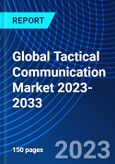Tactical communication often takes place in a hostile environment, where there is a risk of interception or disruption. This requires the use of secure communication channels and techniques. Tactical communication is often conducted under high-stress conditions. This can make it difficult to think clearly and communicate effectively.Tactical Communicaiton Has Been a Key Challenge for Dismounted Soldier Units in Combat Environment
Software-defined radios (SDRs) are becoming increasingly important in military tactical communication. SDRs can be configured to operate on a wide range of frequencies and waveforms, making them more adaptable to changing battlefield conditions. SDRs can be easily scaled to meet the needs of different missions, from small-unit operations to large-scale operations. SDRs can be encrypted to protect sensitive information from being intercepted. SDRs are being used to provide secure and reliable communications between command centers and troops on the ground. SDRs are being used to collect and share intelligence information, such as enemy positions and movements. SDRs are being used to coordinate fire support from artillery and air assets. SDRs are being used to improve the survivability of military communications systems by making them more difficult to jam or intercept. SDRs are still a relatively new technology, but they have the potential to revolutionize military tactical communication. As SDRs continue to mature, they are likely to become even more widely used in military applications.
5G can provide data speeds of up to 10 Gbps, which is significantly faster than 4G. This increased speed will allow for the transmission of large amounts of data, such as video and high-resolution images, in real time. Latency is the time it takes for a signal to travel from one point to another. 5G has lower latency than 4G, which means that data can be transmitted more quickly. This is important for applications that require real-time communication, such as command and control and drone operations. 5G can support more devices than 4G. This is important for military applications, where there are often a large number of devices that need to be connected to the network. 5G uses a number of security features to protect data from being intercepted or disrupted. This is important for military applications, where sensitive information needs to be protected.
Major factors driving Tactical Communication Market Growth
In the wake of swift technological advancements, Command, Control, Communications, Computers, Information and Intelligence, Surveillance, and Reconnaissance (C4I2SR/C5ISR) systems offer the defense and security establishment useful opportunities and serve as a significant force multiplier for commanders at all levels. As militaries compete to improve their network-centric warfare capabilities, communications remain crucial in both present and future scenarios. The highly sophisticated networks in use today are the result of years of advancement in battlefield communication technology. Private and public entities are constantly looking for ways to enhance current alternatives due to the significance of secure communications in military operations. One of the key market trends that will fuel market expansion is this.Table of Contents
Executive Summary
Tactical communication is critical in battlefield operations and achieving mission success. Effective tactical communication can mean the difference between success and failure. In a combat situation, for example, clear and concise communication can be critical for coordinating troop movements, calling in fire support, and sharing intelligence. In a law enforcement setting, tactical communication can help officers de-escalate a tense situation or safely apprehend a suspect. The environment in which tactical communication takes place is constantly changing. This can make it difficult to maintain a clear line of communication and ensure that all parties are aware of the latest developments.Table Information
| Report Attribute | Details |
|---|---|
| No. of Pages | 150 |
| Published | July 2023 |
| Forecast Period | 2023 - 2033 |
| Estimated Market Value ( USD | $ 13.96 Billion |
| Forecasted Market Value ( USD | $ 16.79 Billion |
| Compound Annual Growth Rate | 1.8% |
| Regions Covered | Global |








